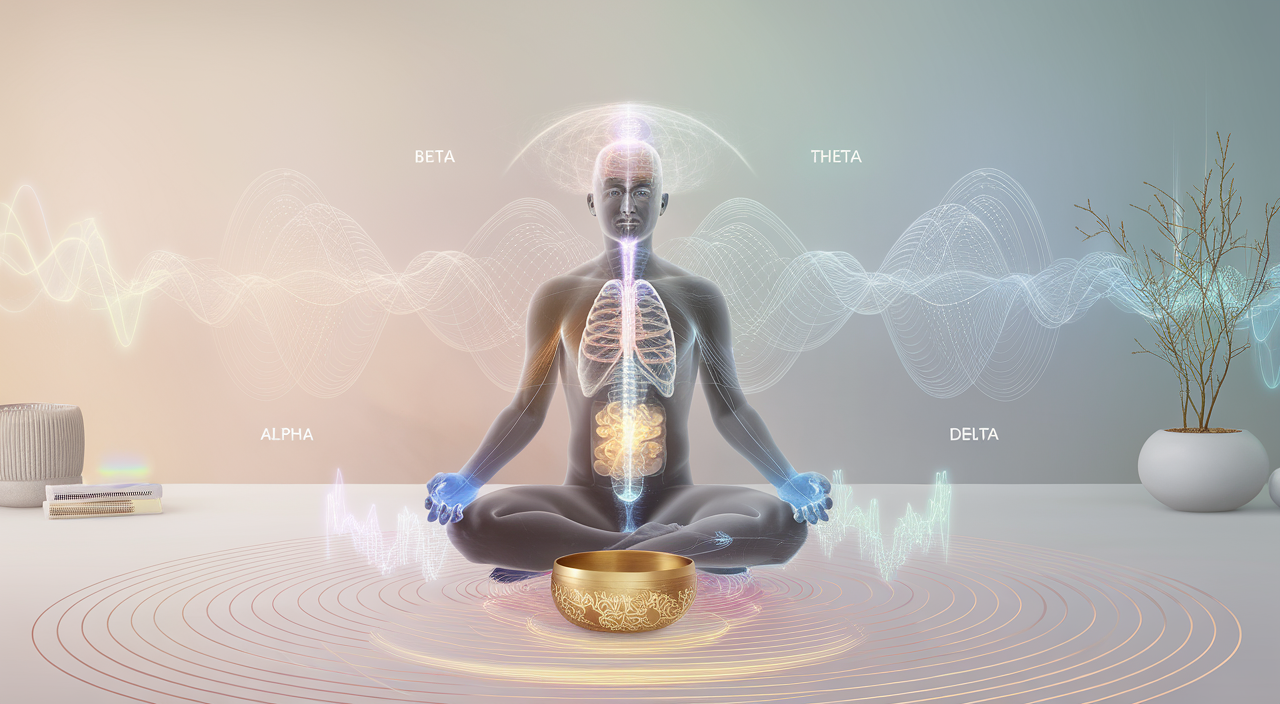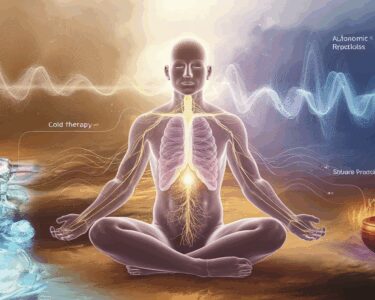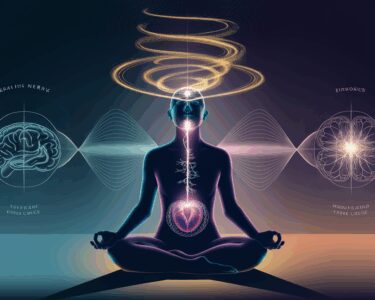How Sound Healing Works: Sound healing taps into specific frequencies and vibrations to sync with your body’s natural rhythms, affecting brainwave patterns and cellular activity.
From ancient Tibetan monks to Indigenous Australians, these practices have transformed into today’s therapeutic techniques using instruments, voice, and electronic frequencies to activate the parasympathetic nervous system and support healing processes.
Key Takeaways
- Sound healing works by creating vibrations that resonate with body tissues and organs, potentially shifting your nervous system from fight-or-flight to rest-and-digest mode.
- Different brainwave states (beta, alpha, theta, and delta) respond to specific sound frequencies, enabling practitioners to target desired mental states.
- Traditional instruments like Tibetan singing bowls, crystal bowls, and gongs produce rich overtones that induce meditative states and physical relaxation.
- Scientific studies have documented sound healing’s ability to lower heart rate, blood pressure, and cortisol levels while reducing tension, anger, and fatigue.
- While promising, the field lacks standardized regulation, making it important to research practitioners’ qualifications and consult healthcare providers before treatment.
How Sound Therapy Works
Sound therapy creates physical vibrations that travel through your body, resonating with tissues and organs at their natural frequencies. This resonance can shift your nervous system from stress mode to relaxation mode. I’ve seen these vibrations help clients release tension they didn’t even know they were carrying.
Brainwave Synchronization
The interaction between sound and brainwaves forms sound healing’s foundation. Your brain operates at various frequencies—beta (alert), alpha (relaxed), theta (meditative), and delta (deep sleep). Sound practitioners use specific tones to guide your brain toward these states, similar to how a tuning fork synchronizes nearby instruments.
Power of Traditional Instruments
Traditional instruments remain powerful healing tools. Tibetan singing bowls produce complex overtones that help induce meditative states. Crystal bowls create pure, sustained tones that resonate with specific energy centers. Gongs combine multiple frequencies that wash over you, breaking up stagnant energy patterns.
Scientific Support
The science backs these ancient practices. Research shows sound therapy can decrease heart rate, lower blood pressure, reduce cortisol, and diminish feelings of tension and fatigue. These physiological changes support healing across various systems.
Choosing a Qualified Practitioner
Finding qualified practitioners requires careful consideration since the field lacks strict regulation.
- Look for professionals with recognized training programs.
- Review client testimonials to assess practitioners’ effectiveness.
- Always consult your healthcare provider before starting sound healing, especially for serious medical conditions.
Healing Vibrations: The Ancient Science of Sound Therapy
Sound healing stems from ancient wisdom passed down through generations across diverse cultures. I’ve discovered that understanding how sound healing works requires looking back at its rich historical roots, starting with Pythagoras around 500 BC, who first documented the therapeutic effects of sound frequencies on human health.
How Sound Healing Works: Cultural Origins and Tools
Different civilizations have created unique approaches to harness sound’s healing potential. Tibetan monks mastered the art of throat singing and singing bowls, while Indigenous Australians utilized the didgeridoo’s deep resonant tones. These traditional practices show how sound healing works through various instruments and techniques to restore balance in the body.
I’ve found that modern practitioners have adapted these time-tested methods into structured therapeutic approaches. Sound bowl therapy benefits showcase just one way these ancient tools remain relevant today.
The Science Behind How Sound Healing Works
Sound healing operates through specific frequency patterns that interact with our body’s energy fields. Here’s how different elements of sound therapy affect our system:
- Vibrations from instruments like singing bowls stimulate the parasympathetic nervous system
- Specific frequencies can help synchronize brainwave patterns
- Sound waves create resonance within body tissues and organs
- Harmonic tones influence cellular function and energy flow
Modern sound healing combines these traditional insights with contemporary understanding. The practice uses precise frequencies and rhythms to promote relaxation, reduce stress, and support the body’s natural healing processes. Whether through voice, instruments, or electronic frequencies, sound healing offers a gentle yet powerful path to wellness.
I’ve seen how sound healing works its magic through both subtle and profound effects. From calming the mind to releasing physical tension, this ancient practice continues to prove its worth in our modern world.
Your Brain on Sound: How Sound Healing Affects Your Body
Sound healing works through a fascinating interaction between vibrations and your body’s natural frequencies. Each of your organs and tissues vibrates at its unique frequency, creating a personal symphony of biological rhythms. I’ve found that understanding how sound healing works starts with grasping these fundamental relationships between sound and our physical being.
How Sound Healing Works with Brainwave States
Your brain operates at different frequencies throughout the day, each associated with specific states of consciousness. Here’s how various brainwave patterns respond to sound healing:
- Beta waves (13-30 Hz): Support focused attention and active problem-solving
- Alpha waves (8-13 Hz): Promote relaxation and creative thinking
- Theta waves (4-8 Hz): Enable deep meditation and enhanced learning
- Delta waves (0.5-4 Hz): Facilitate healing and restorative sleep
The Science Behind Sound’s Healing Effects
The power of sound healing works through multiple pathways in your body. Binaural beats demonstrate this perfectly – when your ears receive slightly different frequencies (like 100 Hz and 104 Hz), your brain creates a third frequency that can shift your consciousness. According to a 2016 study, Tibetan singing bowl sessions effectively lower heart rate and blood pressure.
The impact of sound on your nervous system is particularly noteworthy. Sound healing works by helping transition your body from fight-or-flight to rest-and-digest mode. The 2017 Goldsby study revealed significant reductions in tension, anger, fatigue, and depression among participants. It’s particularly effective for managing pain, with documented benefits for both fibromyalgia and post-surgery patients.
Sound therapy’s influence extends to hormonal balance too. I’ve observed how regular sessions can decrease cortisol levels, your body’s primary stress hormone. This biological response explains why many people experience deep relaxation during sound healing sessions.
Sound Healing Tools and Their Therapeutic Effects
How Sound Healing Works Through Traditional Instruments
I’ve discovered that understanding how sound healing works starts with the core instruments used in practice. Tibetan Singing Bowls create rich overtones that help quiet the mind and induce meditative states. Crystal singing bowls produce pure, sustained notes that can influence your body’s energy centers, making them perfect for chakra balancing work.
Gongs deliver powerful waves of sound that wash over the body, triggering deep relaxation responses. Their vibrations can be felt physically, showing how sound healing works on both auditory and physical levels. Tuning forks offer precise frequency control – the 528 Hz fork, known as the ‘Love frequency’, targets specific areas for healing.
Modern Approaches to How Sound Healing Works
The human voice remains one of the most powerful tools in sound therapy. Through toning and chanting, I’ve seen how internal vibrations can promote healing from within. Binaural beats, delivered through headphones, help adjust brainwave patterns to achieve desired mental states.
Here are key safety considerations I always share with clients:
- Pregnant individuals should consult their healthcare provider before sessions
- People with pacemakers need medical clearance first
- Those with epilepsy should exercise caution with certain frequencies
- Sessions should start gradually to assess individual responses
- Regular check-ins during treatment ensure comfort and safety
While sound healing shows promise, I emphasize the importance of working with qualified practitioners. The field currently lacks standardized regulation, so careful research into a practitioner’s background is essential. I’ve noted growing interest in clinical research to validate sound healing’s effects on specific conditions, though more studies are still needed to fully understand how sound healing works across different applications.
The power of these tools lies in their ability to create measurable changes in our physical and mental states through sound vibrations. From traditional instruments to modern technology, each method offers unique therapeutic benefits when properly applied.
By using specific frequencies and vibrations, practices like therapeutic sound therapy aim to restore balance and harmony within the body and mind.
Sources:
Journal of Evidence-Based Integrative Medicine
American Journal of Health Promotion
Explore: The Journal of Science & Healing
Pain Management Nursing
Journal of Alternative and Complementary Medicine
Brain Behavior and Immunity
Frontiers in Psychology / Neuroscience






